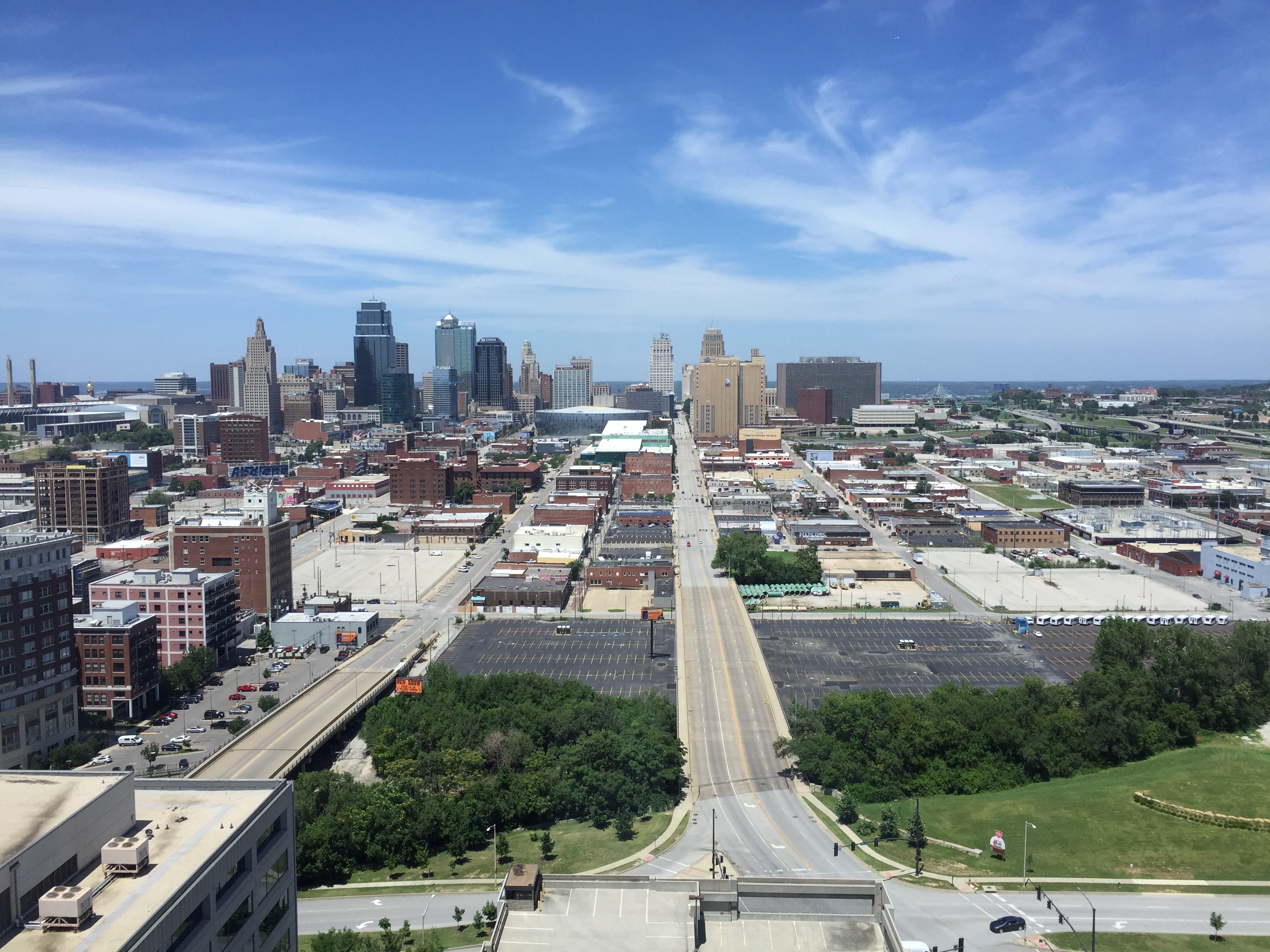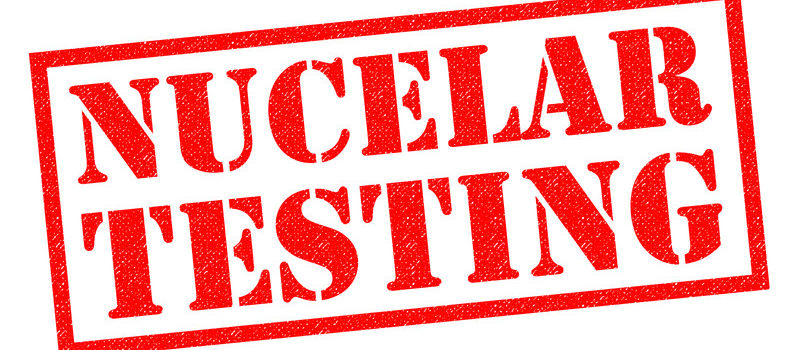“What’s Shaking in Nevada?”
Stewarding the Nation’s Nuclear Deterrent without Testing
A Presentation and Discussion on 06 December 2018 with
David Feather
Senior Director, Program Integration
Mission Support and Test Services, Nevada National Security Site
For all of the old-timer and newcomer Nevadans in NSF who were always curious, but afraid to ask about the goings on at the Nevada National Security Site (NNSS), or as many of us will always call it the “Nevada Test Site”, David Feather, Senior Director at NNSS, came to our rescue. Dave opened his presentation with heartfelt amazement about how many NSFers were out early on a chilly December morning to learn about and discuss national security issues. Dave is a newcomer to Nevada, having moved to Las Vegas about a year ago to serve as Senior Director with the new NNSS site contractor, Mission Support & Test Services (MSTS). Although still baffled about how to grow a tomato in the parched soils of the Great Basin, he is rapidly becoming big a fan of our Silver State.
Starting with a short history of the nuclear weapons testing program at the old Nevada Test Site (NTS), David reminded us that 1000 nuclear weapons tests took place at NTS starting in the early 1950’s and continuing until 1992 when the U.S. halted nuclear weapons testing in accordance with the Comprehensive Test Ban Treaty (CTBT). About 100 of the tests at NTS were conducted “above ground” and the remaining 900 were below ground detonations set off in bunkers or tunnels. Rather than becoming obsolete in 1992, the NTS (now NNSS) evolved into a critical national asset for guaranteeing the safety, security and reliability of nuclear weapons in the stockpile without nuclear testing.
The Test Site is a very unique facility comprised of 1360 mi2 embedded in 5000 mi2 of the Nellis Air Force Base, located about 65 mi NW of downtown Las Vegas. It is owned by the National Nuclear Security Administration (NNSA), a semi-autonomous organization in the U.S. Department of Energy (DOE), and contractor-operated now by MSTS. NNSS is the only place in the U.S. where explosives and nuclear materials can be “mated” for the purpose of testing. It is much more than just a remote, secure and geologically-stable place in the Mojave desert; it is also home to a complex of state-of-the-art fully-instrumented test facilities staffed by over 2200 scientists, technicians, and skilled laborers. Three major programs are integral to the current mission of NNSS – stockpile stewardship, global security, and environmental management of the legacy sites used for nuclear testing.
Of the work conducted at NNSS today, 90% is for the NNSA Stockpile Stewardship Program (SSP) and the remaining 10% is for environmental management and global security customers from the Intelligence Community, Department of Defense, Department of Homeland Security, and law enforcement agencies. The remote desert environment of NNSS is ideally suited for testing tools, techniques, and training for to protect against radiological, biological, and chemical weapons proliferation and attacks.
The key mission for NNSS, stockpile stewardship, grew out of the need to unpin nuclear weapons designs with a more first principles science approach, rather than the build-test-rebuild approach that had dominated the early days of the nuclear program. Every year the three NNSA National Laboratories (Los Alamos, Livermore and Sandia) and the DoD must certify the viability and reliability of all stockpile nuclear weapons based on sophisticated models designed to mimic the behavior of materials under extreme pressure and temperature conditions similar to those accompanying a nuclear detonation and on a suite of non-nuclear tests conducted at NNSS.
Since its inception over 20 years ago, science-based stockpile stewardship has dramatically increased our knowledge of the fundamental properties of nuclear materials and reduced the uncertainty about the reliability, safety and security of nuclear weapons. Back in the old days a nuclear test was followed by a gaggle of scientists racing out to collect and analyze samples from the test site to ascertain, after the fact, what really happened. Today non-nuclear tests are conducted in steel vessels contained in deep underground tunnels at NNSS. Scientists monitor carefully constructed tests of controlled amounts of nuclear materials and explosives with very powerful high-speed X-ray photographs taken as the explosion is unfolding. Test data are then used to validate and/or adjust the models.
Physical tests are also conducted at NNSS to determine the material properties of plutonium under very high pressure and temperature using gas-gun technologies. Relying on a long history of experience handling and testing nuclear materials, scientists and highly skilled technicians assemble test devices and conduct a range of experiments that validate the stability and reliability of nuclear materials and weapons without having to “shake the desert.”
Dave reminded us that NNSS is also home to unique facilities where intelligence, law enforcement, and other government officials can “live-test” nuclear, radiological, chemical and biological detection systems using real materials and simulants designed to detect the proliferation or use of weapons of mass destruction (WMD). In the unimaginatively named BEEF (Big Explosives Experimental Facility), several agencies can conduct tests on large amounts of high explosive materials under controlled and monitored conditions.
On a topic near and dear to the hearts of many NSF regulars, Dave let us know that NNSS is home to a series of Source Physics Experiments designed to mimic illicit nuclear tests conducted by adversaries such as North Korea. Scientists from U.S. national laboratories are able to test new and novel seismological and other nuclear test diagnostic equipment under real-world conditions at NNSS.
Nuclear accident and incident testing and training for first responders is another key global security program. NNSS technical experts based at Nellis and Andrews Air Force Bases conduct real-time monitoring for chemical, biological, radiological, nuclear and explosive (CBRNE) devices during major events such as New Year’s Eve celebrations, Inaugurations, and the Super Bowl.
Dave concluded his excellent presentation with the take home message that DOE is currently making substantial investments in NNSS facilities to improve our ability to maintain our nuclear deterrent and detect and interdict the proliferation of WMD, globally. On a positive note for students and others looking to pursue stimulating careers in national security, MSTS is committed to hiring 350 technical positions in the near future. Hopefully some of you may want to brush up on your nuclear physics and consider a new career in the south…while most of you may just want to attend more NSF meetings. 😊
Graciously fielding a range of interesting questions, Dave reminded us that contrary to the antics of James Bond and Jason Bourne, nuclear weapons do not have an easily accessed panel where our hero can cut the green (or was it the red) wire to stop the device and save the world. In the real world, nuclear weapons are made from uranium, plutonium, high explosives and along with a bunch of non-nuclear components that can degrade over time. Luckily for all of us, NNSS tests and retests all these components to make sure that our weapons would work as and when expected (if ever needed) and never, ever when not expected.
On the timely topic of the President’s threat to Russia to withdraw from the Intermediate Nuclear Forces (INF) Treaty, Dave cautioned that despite Russia’s potential treaty violations pulling out INF could have negative geopolitical considerations. In his personal opinion, the U.S. could design and assemble new weapons that would work without nuclear testing. That said, manufacturing all the non-nuclear components would pose a big challenge. If the U.S. proceeds down the path of withdrawing from INF, other countries may feel compelled to do the same, returning us to nuclear arms race that would be very costly and destabilizing.
Addressing questions about chemical and biological testing done at NNSS, Dave reminded us that this topic is a very high priority for the USG given the plethora of threats and events by both state and non-state actors. NNSS is actively engaged in response and recovery training for first responders through simulant tests of chem-bio devices in mock rail car, subway car, and other confined spaces.
In addition to training U.S. experts, NNSS also cooperates with nuclear and non-nuclear weapons experts from other countries. To reduce the risk of a nuclear accidents worldwide, NNSS hosts other countries to participate in nuclear safety training and programs designed to safeguard nuclear materials. Dave let us know that Russian experts would be visiting NNSS the follow week on one of these exchanges.
So, what happens to all the nuclear waste that was generated on NNSS over decades of testing and use. Factoid one from Dave is that 93% of NNSS was never disturbed in the legacy programs. The Desert Research Institute leads the cultural preservation programs on site and has reported on the unique, pristine ecological conditions of much of the site. That leaves the remaining 7% that is actively under waste consolidation and clean-up by the DOE Office of Environmental Restoration. Clean-up programs are slated to continue for the next decade and the USG had committed to monitoring and protecting these sites “forever.”
Dave delicately danced on the final third-rail question many in the audience had come to hear…What about Yucca Mountain? Prefacing his response by stating that MSTS does not have responsibility for operating Yucca, he reminded us of three considerations for using the facility in the future; 1) the sunk cost of the extensive resources that still exist there, 2) missions that may be executed safely and securely on site, and 3) the political environment that may (or may not) make any future programs viable.
On the specific topic of using Yucca for potential reprocessing of spent nuclear fuel in the future, Dave invoked the “cupcake” analogy of our current nuclear energy fuel cycle. Most of the world uses “once-through” nuclear energy designs, which resemble eating all the icing of a million cupcakes then tossing the cake out to be disposed of. Reprocessing would constitute finding a safe and secure way to put the icing back on the cake so it could be used again. Although technically doable and environmentally more beneficial than mining more uranium, reprocessing spent nuclear fuel is both politically and economically intractable at present. The concept did make a comeback a few years ago when DoD considered investing in small portable nuclear reactors to reduce proliferation and guarantee reliable fuel supplies for troops at home and abroad. These programs died an untimely death due to the political fallout following the Fukashima nuclear accident in Japan and the economic fallout due to the overwhelming success of fracking natural gas in the U.S. Bottom line on Yucca for now is…as goes politics in Nevada, so goes Yucca!
In follow-up to his excellent NSF program, Dave is exploring opportunities for a small group from NSF to visit NNSS sometime next spring/summer. Please let Patty or me know if you would be interested in participating and we will keep you informed as plans materialize and are tested for reliability, security and safety.
Mr. David Feather, serves as the MSTS Program Integration Senior Director at the Nevada National Security Site, leading the Transformation Office and integrating program activities across NNSS. He has over 25 years of weapons experience both as a federal employee with the National Nuclear Security Administration (NNSA) in Washington, D.C., and with Honeywell at the Kansas City National Security Campus. Most recently, he served as Senior Director of Strategic Transformation at the Kansas City National Security Campus, growing the portfolio of Strategic Partnerships Projects. While at the Department of Energy, Feather served as Director of Planning, Analysis, and Program Integration for Stockpile Management leading budget formulation and execution for the nuclear weapons production and operations programs. David graduated from the University of Kentucky with a BS in Electrical Engineering. He received a Master’s Degree from Vanderbilt University also in Electrical Engineering.


